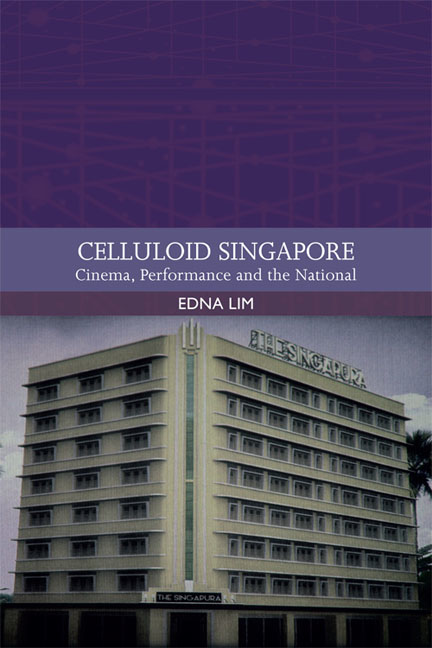Book contents
- Frontmatter
- Contents
- List of Figures
- Acknowledgements
- Traditions in World Cinema
- 1 Introduction
- 2 Merdeka!: Merger, Separation and a Transnational Golden Age
- 3 Influence, Hybridity and How the Past is a Foreign Country
- 4 Nation-building, a Nun and a Bionic Boy
- 5 Not so Foreign: the Case of Saint Jack
- 6 One People, One Nation, One Singapore
- 7 Revival Cinema: ‘Other’ Singaporeans in (An)other Singapore
- 8 Singapore Cinema in Singapore
- Works Cited
- Index
5 - Not so Foreign: the Case of Saint Jack
Published online by Cambridge University Press: 11 November 2020
- Frontmatter
- Contents
- List of Figures
- Acknowledgements
- Traditions in World Cinema
- 1 Introduction
- 2 Merdeka!: Merger, Separation and a Transnational Golden Age
- 3 Influence, Hybridity and How the Past is a Foreign Country
- 4 Nation-building, a Nun and a Bionic Boy
- 5 Not so Foreign: the Case of Saint Jack
- 6 One People, One Nation, One Singapore
- 7 Revival Cinema: ‘Other’ Singaporeans in (An)other Singapore
- 8 Singapore Cinema in Singapore
- Works Cited
- Index
Summary
‘A STATE OF MIND’
According to Ben Slater, ‘Singapore occupied a particular territory in the Western imagination. A glamorous city of abandon and escape, romance and adventure.’ Although this image of Singapore was popularised by the documentary- style film adaptation of Frank Buck's book Bring ‘Em Back Alive (Clyde E. Elliot, 1932), and Singapore became a popular setting in a number of American films before the 1950s, ‘none of the crews … had ever left Burbank, California.’ The Singapore they created was built on stage sets. Singapore ‘wasn't a place; it was a state of mind’.
One of the first films to imagine Singapore is Across to Singapore (William Nigh, 1928). This is a silent film about a love triangle between Priscilla Crownshield and two brothers, Mark and Joel Shore. Singapore becomes a setting in the film when Joel and Mark voyage to the island. There, Joel gets involved in a bar brawl, while the drunken Mark is knifed by locals and left behind by his ship. The film's Singapore is a shantytown that is generally Chinese but includes people of other races such as Sikhs and Caucasians. It comprises three main spaces (see Figure 5.1): the port, which is essentially a wooden jetty leading to a dirt road; an ancient Chinese-styled tavern whose patrons are generally Asian – a number of them have turbans, including one who is obviously Caucasian; and a small, narrow, spartan room above the tavern where Mark and a Chinese belly dancer reside after he is injured. This Singapore is obviously a stage set and depicted as an exotic, backward isle, with strangely attired natives and mixed races. Although the things that happen here forward dramatic action in the film, Singapore is nothing more than a background location.
The Singapore in Jean de Limur's The Letter (1929) is a slightly less dingy but still primarily Oriental sea town. It is introduced in the opening sequence as a relatively busy port with locals in bumboats servicing a large ship. The town and streets are filled with Chinese in their loose tops, trousers and hats, Malays in songkoks and sarongs, as well as Western sailors in their uniforms (see Figure 5.2).
- Type
- Chapter
- Information
- Celluloid SingaporeCinema, Performance and the National, pp. 92 - 118Publisher: Edinburgh University PressPrint publication year: 2018



